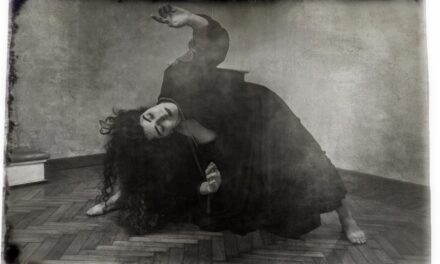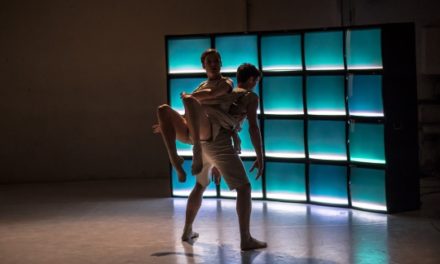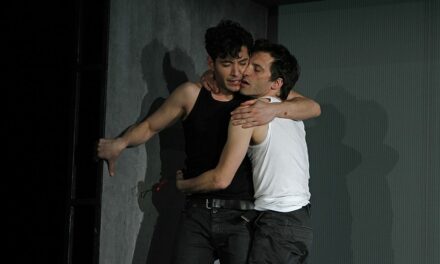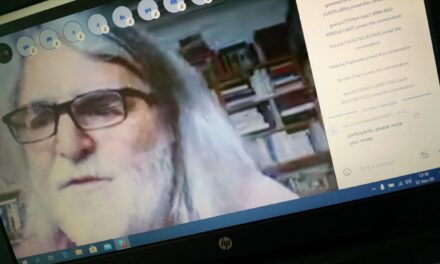Boris Vitázek is a new media artist based in Bratislava, but his work can be seen at various international festivals. He gave a workshop on coding in VR at the 4th Zip-Scene Conference and with this occasion we asked him about his multifaceted expertise in new technologies.
Tell us about your background, what motivated you to start to work with interactive technologies?
I grew up loving technology – my first PC was Didaktik Gama, which was Czechoslovakian clone of Sinclair ZX Spectrum. For unknown reasons I developed affinity for art through photo manipulation, even though I was never great at drawing or other traditional mediums. Then sometime in secondary school while studying photography I was part of Pure Data and I was hooked from day one! Later in some VJ meeting in Slovakia, I got my hands on VVVV which really clicked with me, and from there I was just always connecting nodes with cables. So since around 17 years I was really set on mixing mediums in a digital context. I love new things, and spaces between – experiments with genres and mediums that exist in the gradients between established paradigms.
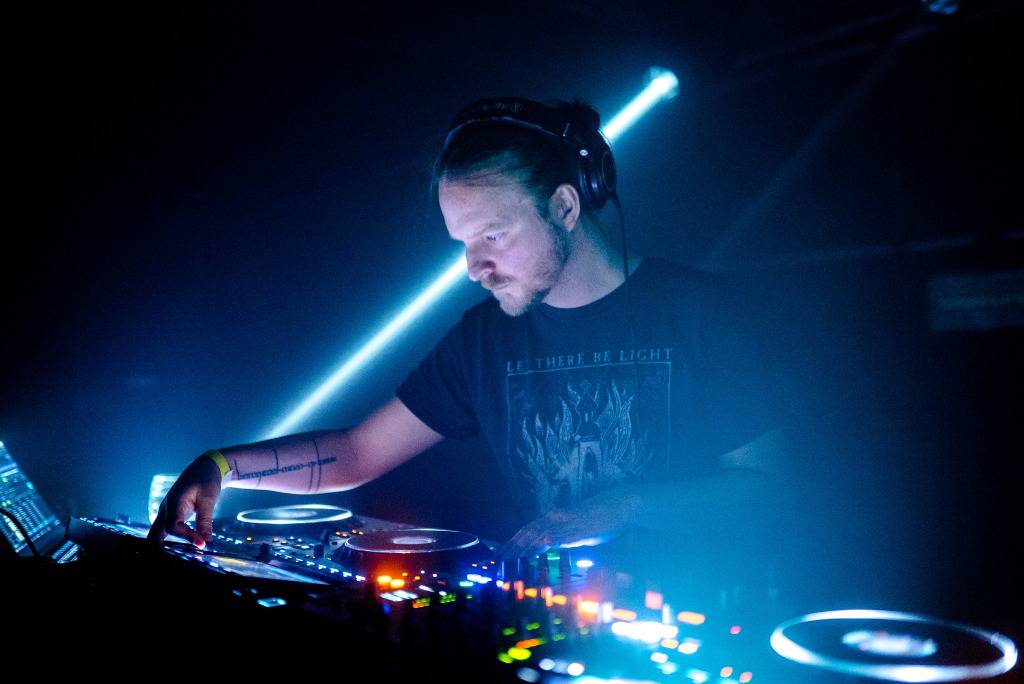
Boris Vitázek.
What does it mean for you, telling a story through the media that you are working with?
Stories for me are about confrontation. There needs to be a conflict that is getting resolved. I like thinking about stories and what they mean, but I truly love horror and thriller – because it’s usually about the ultimate confrontations with those problems that define our life. I love to use stories as anchor for creating artworks, it really helps having some narrative to build your work around. I find it a bit hard to do it in 3D environments, as it needs tons of work to do it right, so one of the outlets for me is theater. I got to do dramaturgy recently in a theater piece with my friend and I loved it, so I hope I’ll have the chance to be in a position of a stage director in the upcoming few years – if I find the time and funds. I think a lot of contemporary digital art lacks stories and even worldbuilding. Instagram is dominated by flashy light installations and cool looking 3D visual snippets – this brings likes and likes gets booked to festivals, and it often feels a bit flat for me. Fortunately for me, horror in cinema is actually in a really good place. A24 is bold in producing horror that is more than just gore fest. One of the most impactful art pieces for me was the movie Men, made by Alex Garland and released last year.
Do you have any leitmotivs that you are using in each of your productions?
I like working with human figures, because it’s great in connecting the audience to the work, however it comes with a great cost for time and effort that needs to be put into animation. Thematically I like dealing with internal conflicts, environmental crises, human perception of entities that manipulate their lives. These can be god figures, AIs or corporations that create them.
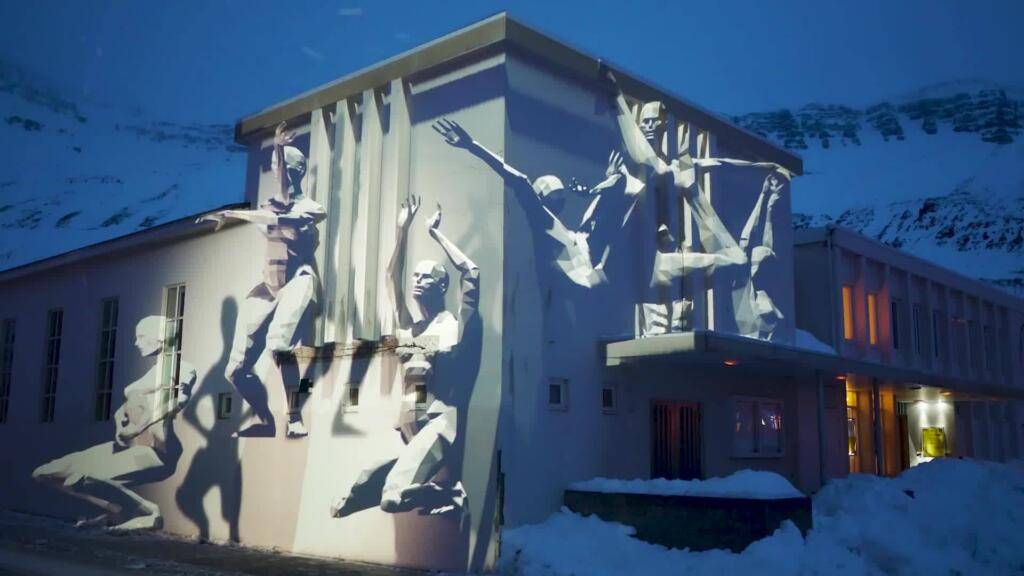
Litany in Iceland. Photo by Boris Vitázek.
Do you have any favourite or comfortable medium for you that you like to use the most in your work? Which is it and why do you like it? Or if you do not have can you please explain why not?
Right now I actually feel very comfortable in Blender – which is a software, but considering its versatility could be considered medium (as Ian Hubert called it in his talk at the Blender conference). Working in it feels very natural for me, instead of solving problems and overcoming obstacles that you have to do while programming in VVVV or Unity, I can just focus on the work – the visuals, telling the story with animation, which I value a lot. I never learned coding in school, everything I learned was self taught from the internet, which means I always have to learn something, even when it comes to very fundamental mathematic. I love learning things, and I would define my job as being able to overcome the learning curves of different tools fast enough to make something with them, but it really slows down my ability to express myself as an independent artist. Having tools that actually work and have certain limitations put to my expression that dictates my output could help me to be a bit more focused and just work on the story for a change, rather than trying to tame some kind of technology.
You contributed in the frame of Ars Electronica in this project. Can you tell us more about this and why was it important for you? In your own artistic work do you also tend to combine scientific discoveries or methods with artistic experimentation?
My contribution for Ecolalia was mostly technical, I programmed the software that runs the latest iteration of the whole performance. It was certainly a challenge for me and I was curious about the project, which was my main driver behind this cooperation. I love science, I truly believe it’s the most amazing tool humanity ever came up with. I do not trust my senses and my intuitions much – I believe nobody should. We have amazing ability to communicate and gather data, parse them, find the patterns and make sense of the world by combining our brains. Would be great it if people would pay more attention to it, and used it as a tool more. People should love it even for its most boring parts of sifting through the data sets and thinking what data to log, how and why. I am a bit cautious with science in art. It’s hard to do it justice, there is a lot of “science inspired” work, rather than science based. Data sets became just a selling point of the work, visuals that would be indistinguishable from just using noise fields. I would like to do more art intertwined with science, but I’d like to find a scientist with whom I can cooperate. So far I did one very data based work about climate change, because there are good data sets available online.
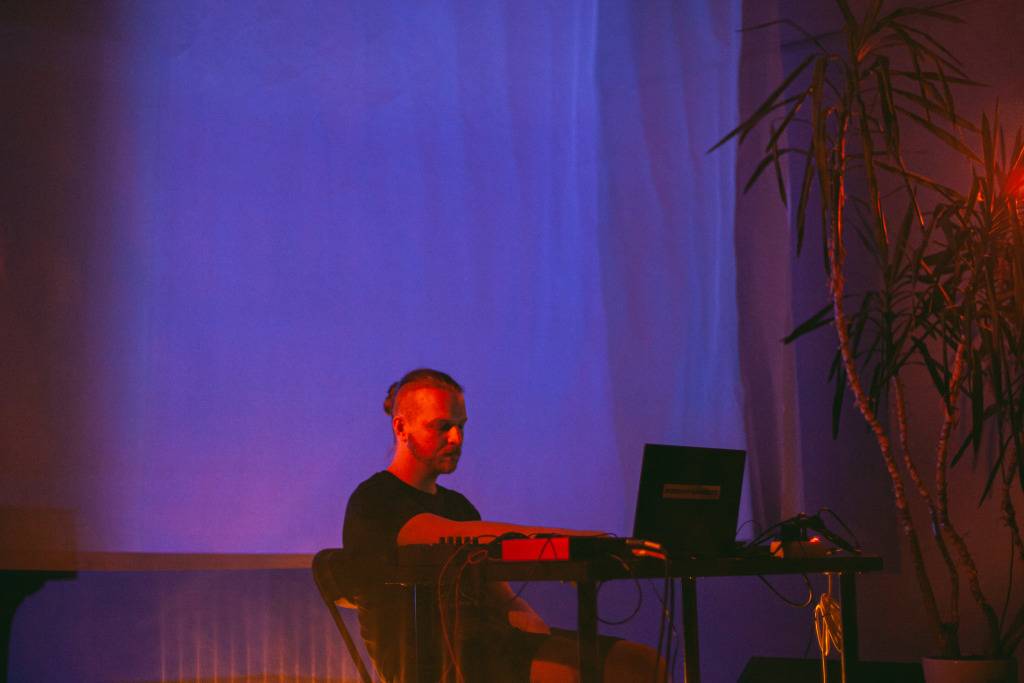
Boris Vitázek.
You created a very provocative VR production that is dealing with privacy/data and our awareness of what we share. Can you tell me more how you started to develop this?
Smaller performative festival in Slovakia called Kiosk published an open call for artworks, it was summer date during the second wave of pandemic. This resulted in an open call for an audience of one. In my opinion using VR in galleries or festivals – or in any public setting – with shared headsets is weird. It isolates you in an event that is about bringing people together, so I gravitated to a work that is critical of some aspects of VR. I used a Kinect for tracking people and had projections set up that used one wall of a room to create a sort of digital mirror. Kinect allows me to adjust the perspective of the 3D and also to adjust it for the person viewing the work. This creates the illusion of a 3D environment that you could interact with. This production dealt with data collection of the VR users. Companies had never before this much insight into our physical lives, the way we move, where we focus in space, 3D scan of our homes, I think it’s a bit crazy that people don’t think very much what all could be done with this. Some people cover their webcams with tape, imagining the amount of data coming from VR. That is why the work was called Lush Fields, Ready For Harvest – a new frontier of data that could be collected.
Do you think are the areas of the medium of VR that are less explored in artistic creation?
To be honest I do not feel like I have wide enough engagement with VR to be able to make this assessment. What I really hope for is that VR will get comfortable enough that wide audiences could have longer experiences with it.
How do you see the future of social VR spaces? Will we be more aware of our data, or this won’t be an issue at all?
Society has a very hard time to think ahead. Only way we will ever learn is from getting burned, so I think that we will need a few cautionary tales about data that could be misused from VR that will bring this problem to the attention of the public. One of the most surreal things I saw in VR was someone having epileptic seizure in VR chat, while a combination of meme and anime-like characters stood around and talked about what to do. I think VR has a great potential in medical, and perhaps therapeutic practice that we have yet to unlock.
What is your next inspiring challenge in your work as a creator?
I released my debut album recently, so my work in upcoming months will revolve around making it into live performance, and until the end of the year into live audiovisual performance. I would like to transition this A/V performance into a 3D environment that would be a proper VR experience, combining strong interaction of visual and sound. The album is called Amalgam, since its combination of different themes, but I plan to work on one narrative that would give this work a good foundation.
Interview realised with the support of International Visegrad Fund.
This article appeared in ZipScene Magazine on November 23, 2022, and has been reposted with permission. To read the original article, please click here.
This post was written by the author in their personal capacity.The opinions expressed in this article are the author’s own and do not reflect the view of The Theatre Times, their staff or collaborators.
This post was written by Zip Scene Magazine .
The views expressed here belong to the author and do not necessarily reflect our views and opinions.

